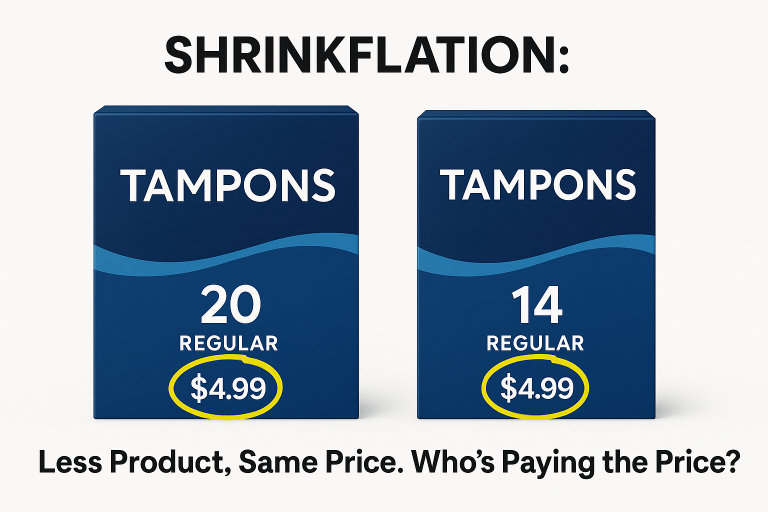
Tampon Crisis: Procter & Gabble in Action
Less Product, same price
While toilet paper shortages made headlines early in the pandemic, a more serious and prolonged crisis affected millions of women across the UK – and received far less attention.
Between 2021 and 2022, the cost of tampons rose by nearly 10%, while the
price for pads increased by 8.3%. But unlike food or fuel, these are products
women cannot simply choose to go without.
At the centre of this crisis was Procter & Gamble, maker of Tampax – the
UK's leading tampon brand. While consumers struggled to find products,
P&G's corporate decisions told a revealing story.
P&G relied on a single Tambrands facility in Maine, USA, to produce 9-11
million tampons daily for multiple global markets, including the UK.
Despite early warning signs of cotton shortages, the company failed to
secure stable supplies or develop contingency plans.

Most telling was P&G's earnings call during the height of the shortage.
While acknowledging supply problems, executives reported 10% sales growth
in their feminine care division – growth they described as "driven by
premiumization and pricing."
When asked directly about future pricing, P&G stated: "There is no formula-based approach to pricing in any of these
categories." In other words, prices weren't simply reflecting costs – they reflected what the market would bear.
For women across the UK, the consequences were immediate and personal. Many reported visiting multiple stores without finding the necessary products. Others faced impossible choices between feminine hygiene and other essentials as prices continued to rise.
The tampon shortage exposed not just supply chain vulnerabilities, but a corporate culture that saw essential health products primarily as profit opportunities, even during a crisis.
